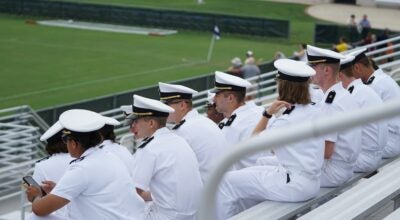Ole Miss team to scan for graves of Union soldiers in Columbus
Published 10:30 am Monday, June 4, 2018
The University of Mississippi’s Center for Archaeological Research announced plans last week to use remote sensing technology to uncover possible graves of Union soldiers in Columbus, Miss.
The cemetery in question, Friendship Cemetery, is the final resting place of more than 2,100 Confederate soldiers, but researchers have reason to believe it’s also the site of 10 unmarked graves of Union soldiers, buried alongside the men they fought against in the Civil War. Friendship Cemetery is most famous for being one of the first places “Decoration Day,” a Memorial Day predecessor, was observed.
Dr. Tony Boudreaux, director of the UM Center for Archaeological Research and associate professor of anthropology, is leading the project.
“There’s a gentleman in Columbus by the name of Lucas Ward who is a local historian, and he found some documents that indicated where in the cemetery some Union graves may have been located, and sort of the history of Decoration Day, the honoring of the Confederate and Union soldiers,” Boudreaux said. “It started in that part of the cemetery where the Confederate soldiers and the Union soldiers were buried. The thinking was that if we could come in with the remote sensing technologies, we could possibly see if there are any unmarked graves in that part of the cemetery, then it would give us an idea of where they are.”
The project will begin this fall, with students from the university’s public archaeology class. Boudreaux said he’s expecting a group of no more than 10, but others who would like to be involved are welcome.
In order to survey the ground they will use different kinds of remote sensing technology, chiefly ground-penetrating radar, to send an electronic pulse up to 20 feet into the ground. The pulses will be used to generate images of what the area beneath soil looks like.
The team also will use a magnetometer, which can pick up localized differences in underground magnetic fields. Depending on the soil conditions, Boudreaux said it should be relatively easy to determine what lies beneath the surface.
Surveying the spot should take about a week, and events are in the works to allow the public to experience the project at the site.
Regardless of what they find, Boudreaux said the history the cemetery represents is worth the hard work.
“You don’t have to be able to see those graves in order to recognize that as an important place,” he said. “But there’s something sort of powerful about having some kind of physical, tangible evidence to say, yes, this is the spot where these events may have taken place.”





